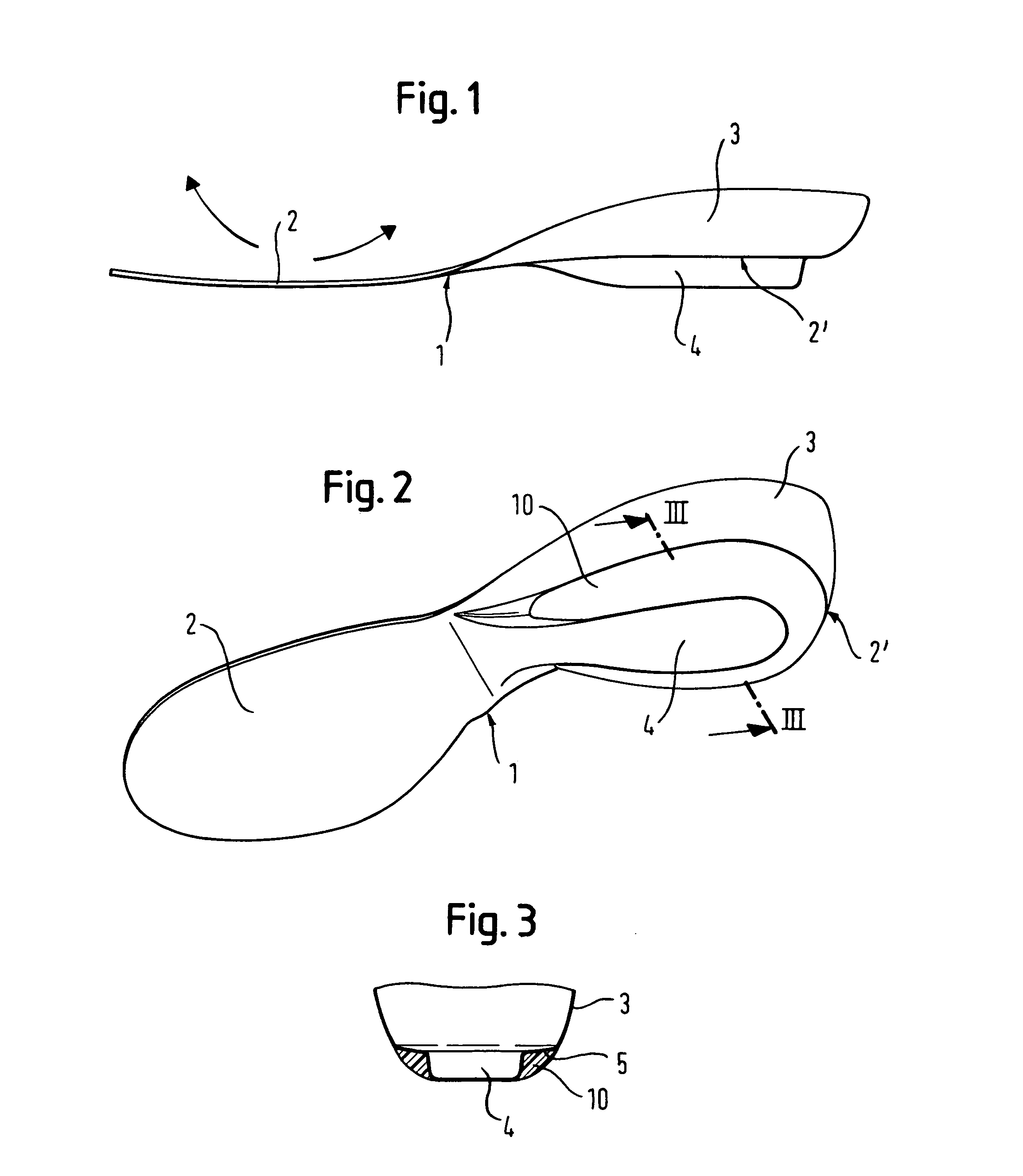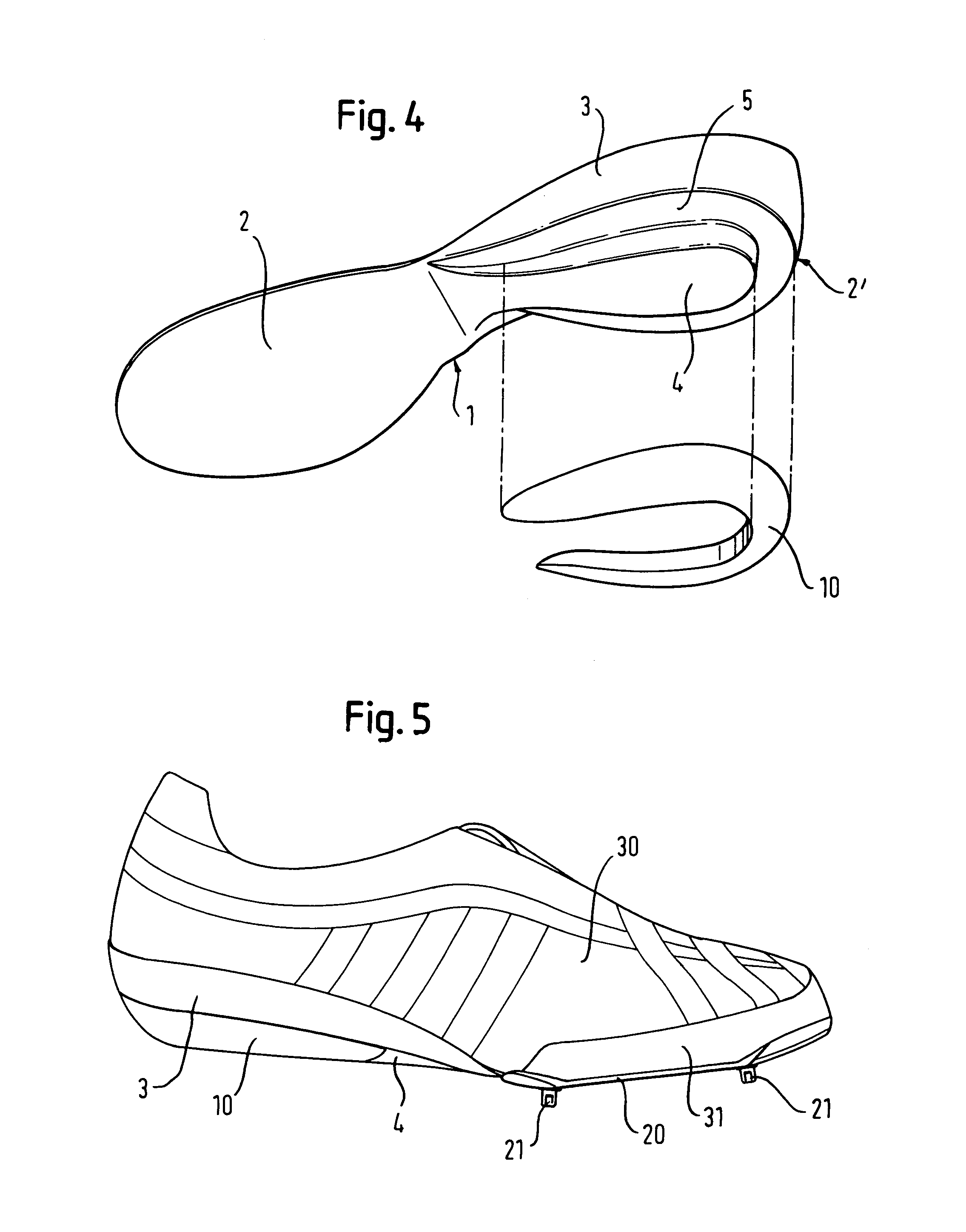Plate for running shoe
a technology for running shoes and elastic plates, applied in the field of shoes, can solve the problems of not being able to achieve the intended effect, the return of invested energy, and the insufficient transmission of the spring force of the elastic plates during push-off to the complete foo
- Summary
- Abstract
- Description
- Claims
- Application Information
AI Technical Summary
Benefits of technology
Problems solved by technology
Method used
Image
Examples
Embodiment Construction
[0028]With reference to FIG. 1, a sports shoe according to the invention includes a plate 1 arranged in the sole area of a foot. For simplicity, only the plate 1, together with an optional damping element 10, is shown in FIGS. 1 through 4. The exact arrangement within the sole area of the shoe is discussed further below, with reference to FIGS. 5 through 7.
[0029]As depicted in FIG. 1, the plate 1 includes a generally planar forefoot part 2. The forefoot part 2 may have a thickness of about 1 mm. The thickness of the forefoot part 2 may vary depending on the material used. The material for the spring plate is typically a composite material. Composite materials may include: graphite, fiberglass, carbon fibers embedded in a matrix of resin, or para-aramid fibers, such as the Kevlar® brand sold by DuPont. These materials combine high stiffness and low energy loss with low weight. Alternatively, the use of spring steel or other elastic metal alloys is possible. Further, suitable plastic ...
PUM
| Property | Measurement | Unit |
|---|---|---|
| Fraction | aaaaa | aaaaa |
| Stiffness | aaaaa | aaaaa |
| Stiffness | aaaaa | aaaaa |
Abstract
Description
Claims
Application Information
 Login to View More
Login to View More - R&D
- Intellectual Property
- Life Sciences
- Materials
- Tech Scout
- Unparalleled Data Quality
- Higher Quality Content
- 60% Fewer Hallucinations
Browse by: Latest US Patents, China's latest patents, Technical Efficacy Thesaurus, Application Domain, Technology Topic, Popular Technical Reports.
© 2025 PatSnap. All rights reserved.Legal|Privacy policy|Modern Slavery Act Transparency Statement|Sitemap|About US| Contact US: help@patsnap.com



